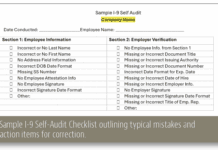
As we enter 2024, the agricultural sector will need to gear up for new employment laws and regulations. It’s a routine occurrence at the start of each year, and this time is no different.
These regulations span various aspects of employment within agriculture, from labor standards to adjustments in health and safety protocols. The goal is to break down these complexities, allowing you to navigate these changes easily while staying compliant. You will need to take action to safeguard your operation, so we aim to equip you with the necessary knowledge and tools to adapt to these modifications effectively.
Minimum Wage Increase
Beginning Jan. 1, 2024, California’s minimum wage increased to $16 per hour for all employers. Minimum wage increases also trigger a salary increase for exempt employees. Exempt employees are required to earn twice the minimum wage rates, which means these employees will make $32 per hour for a 40-hour work week. This equates to $1,280 per week or $66,560 annually.
Please note several cities and counties have implemented higher minimum wage rates. Sonoma, Petaluma, Santa Rosa and San Diego all have higher rates ranging from $16.85 to $17.45 an hour. It is essential to check these rates with the local municipalities in the areas in which you work to ensure compliance.
Under the law, California’s minimum wages are evaluated annually to adjust for inflation. The minimum wage will never be lowered; however, the most it will increase is by 3.5%. Employers can expect an adjustment to be announced by September 1, and the new rates will be effective January 1 in the new year.
Employers must post the Minimum Wage Order poster and the Wage Order applicable to their workplace at a worksite area accessible to employees. The wage orders can be downloaded and printed from the California Department of Industrial Relations website. Additionally, employers must ensure that the wage rate is documented on the employee’s pay stub and that employees are paid at least the minimum wage even when employees are paid at piece rate compensation.
Overtime for Agricultural Workers
Under Assembly Bill 1066, California has gradually reduced the industry’s workday from 10 to 8 hours per day. Beginning in 2023, large employers with 26 or more employees were required to pay employees overtime if they worked more than eight hours in a day or more than 40 hours in a week. Small employers, those with 25 or fewer, are still in the process of gradually reducing regular hours to get to the eight-hour workday. In 2024, this category of employers will be required to pay overtime to workers with more than 8.5 hours per day or 45 hours per workweek. In 2025, all agricultural employers will be subject to the law and be required to implement an eight-hour workday and a 40-hour workweek.
Expansion of Paid Sick Leave
This past fall, Governor Newsom signed SB 616, which amended California’s paid sick leave requirement under the Healthy Workplaces, Healthy Families Act of 2014. This law, which takes effect Jan. 1, 2024, increases the number of paid sick leave days an employer is required to provide from three days or 24 hours to five days or 40 hours for eligible employees. Under this law, employers can allocate all sick time at the beginning of the year or have employees accrue paid sick leave. Under the accrual method, employees shall have all five days or 40 hours made available by the 200th calendar day of employment. Additionally, employers can limit the employee’s use of paid sick leave or paid time off to 40 hours in a calendar year and cap paid sick leave or paid time off accrual at 80 hours or 10 days.
Reproductive Leave Loss for Employees
Under SB 848, employers with five or more employees must allow eligible employees (who have been employed for at least 30 days) to take up to five days of unpaid reproductive loss leave. This law defines a reproductive loss leave event to be a failed adoption, failed surrogacy, miscarriage, stillbirth or an unsuccessful assisted reproduction. The leave must be used within three months of the event and limited to 20 days within a 12-month period. Additionally, the employee is not required to take consecutive days off and can spread them out within the three-month period.
Cannabis Protections
In 2023, two new laws were passed to add protections to those who use cannabis, which will ultimately impact employment practices.
Off-Duty Cannabis Use
AB 2188, which will be effective Jan. 1, 2024, makes it illegal for an employer to discriminate against a person in hiring, termination or any term or condition of employment or otherwise penalize a person if the discrimination is based upon the person’s use of cannabis off the job and away from the workplace. The law still allows employers to conduct preemployment drug screening or an employer-required drug screening test. It is important to note the drug test must not screen for nonpsychoactive cannabis metabolites. Be sure to work closely with your drug screening providers to ensure they are not including this in their tests.
While on duty, it is still unlawful for an employee to possess, be impaired by, or use cannabis on the job. This law does not release an employer from their obligation to maintain a drug-alcohol-free workplace.
Also, effective beginning Jan. 1, 2024, is SB 700, which makes it unlawful for an employer to request an applicant to provide information regarding prior cannabis use. The employer is also not permitted to use criminal history to uncover prior use of cannabis.
Workplace Violence Prevention Program
This past fall, SB 553 was passed, which requires all California employers to create and implement workplace violence prevention, train employees and maintain proper program documentation. This can be a standalone program or included in your Injury and Illness Prevention Program. This will not go into effect until July 1, 2024; however, we recommend employers to begin the process of developing a program and determining their training needs.
As you begin to prepare for the kickoff of 2024, it is essential to review and update your employee handbook to include these new regulations. Additionally, schedule time with your employees to discuss the changes made and ensure you are available for any questions they may have. If you need assistance with creating a handbook, developing your injury and illness prevention program or any updates, please do not hesitate to reach out to the AgSafe team via email at safeinfo@agsafe.org.
The information provided in this article was based upon the Employment Law Bulletin – New Laws for 2024 authored by the Law Offices of Charley M. Stoll, a Professional Corporation in December 2023.
AgSafe is a 501c3 nonprofit providing training, education, outreach and tools in safety, labor relations, pesticide compliance and human resources for the agricultural community. Since 1991, AgSafe has educated over 100,000 employers, supervisors and workers about these critical issues.











